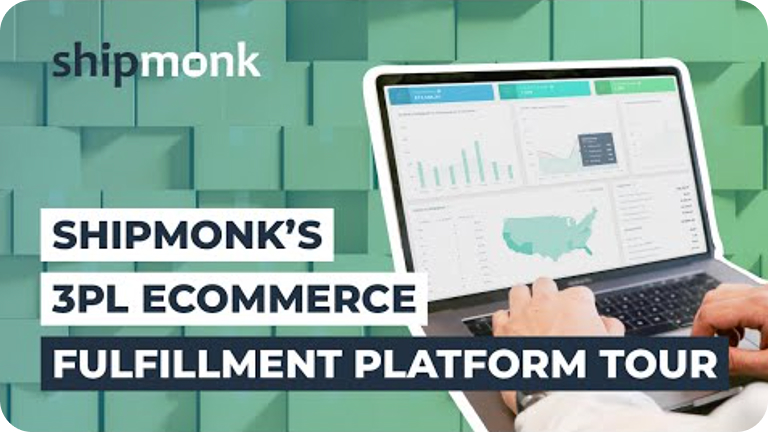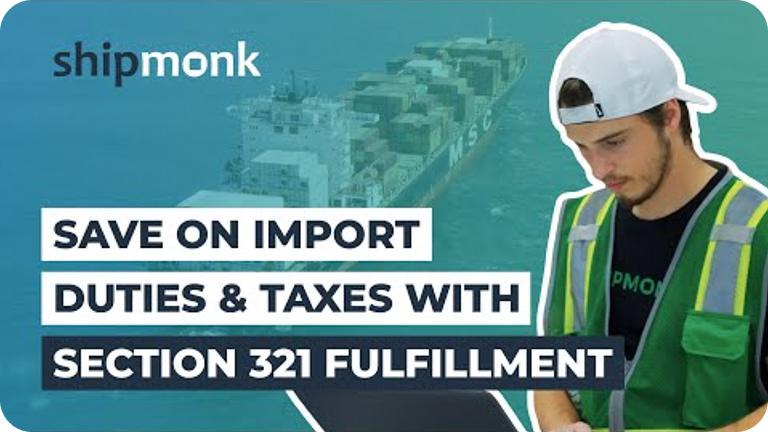Given that we’re about to enter peak shopping season (a.k.a. peak shipping season), we decided it’s time for a refresher on dimensional (DIM) weight, how to calculate it, and what you can do to avoid it.
How Shipping Costs are Calculated
All major carriers including USPS, FedEx, UPS and DHL use the same four factors to calculate shipping costs: package weight, dimensions, the distance it’s traveling, and how fast it needs to get there. Because each carrier sets its own rates and standards for each of these factors, you need to input all this information with each carrier in order to compare shipping rates.
When a package’s volume exceeds a certain size in proportion to its weight, (meaning that it’s not very dense) it may be subject to DIM weight pricing.
What is DIM Weight?
Traditionally, the heavier the package the higher the shipping cost, but as ecommerce shipping volume mushroomed, cargo space became more valuable. In 2015 shipping carriers universally adopted the DIM weight pricing formula, which factors both a package’s dimensions and its weight into account. Packages that take up more cubic inches per pound than the carrier allows are subject to DIM weight pricing, rather than simply paying by weight.
Carriers use their own formulas to calculate the DIM weight. They then compare it to the package’s actual weight in pounds or kilograms, and the larger of the two numbers becomes the package’s chargeable weight. This, along with the shipping method and zone, are combined to arrive at the base shipping rate. Additional charges like fuel surcharges, extra handling charges, or peak demand surcharges may also add to the cost.
How to Calculate DIM Weight
Each carrier has its own dimensional/volumetric calculator, and may also have different criteria, such as a limit on a package’s maximum length or volume, that determines whether or not it will be subject to DIM weight. Because shippers simply input the dimensions and weight, the calculations are not transparent. In order to avoid DIM weight charges, you need to know the formula.
1.) Measure the length, width, and height of your package, using the longest point for each side and rounding each measurement up to the nearest whole inch or centimeter.
2.) Multiply all 3 measurements to get the cubic size of your package.
3.) Divide the cubic size by the carrier’s unique DIM factor (DHL calls it a density factor) and round up to the nearest whole number.
Access ShipMonk’s interactive DIM Weight Calculator here.
How to Find the DIM Factor
The DIM factor (or density factor) is simply a number set by the shipping carrier to represent the maximum cubic inches per pound they will accept. Each carrier has the freedom to set their own DIM factor, but to remain competitive they generally use one of the following:
- FedEx, UPS, and DHL Express: 139
- DHL eCommerce* and USPS*: 166
* Note: For DHL and USPS, DIM weight only applies if the package is larger than 1 cubic foot. A different DIM factor may be used for international shipping.
Because the total cubic inches are divided by this number in the formula above, the higher the DIM factor, the lower the DIM weight — and the lower your final shipping cost.
Some carriers (like UPS) will charge their regular business customers one rate, and infrequent customers a different retail rate. Similarly, because space and weight limitations vary between air freight, ocean, rail, and road, some shipping carriers (like DHL) use a different DIM factor for each mode of transportation.
How to Avoid DIM Weight Pricing
Since DIM weight is based on package weight and dimensions, anything you can do to reduce a package’s size or weight will pay off.
Reduce Size
Large packages that are light for their size are most likely to be subject to DIM weight pricing. There may not be a way to reduce your product’s size, but here are a few places to start.
- If possible, disassemble the product to make it more compact.
- Ship disassembled pieces together but in separate packages for reassembly by the end customer.
- Is your product packaged well enough that it can be shipped as is, without the added expense and size of an exterior shipping package?
- Vacuum seal soft products to reduce their volume.
- Orders that contain multiple products can be divided into two or more smaller packages, rather than one excessively large package.
Optimize Packaging
Large boxes and packing materials add weight and size to every order. Make sure you’re not tipping the scales into DIM weight territory simply because of packaging.
- Your fulfillment center or logistics provider can help you source the smallest packaging and lightest packing materials to get the order safely to its destination while avoiding DIM weight penalties or oversize charges.
- If a product is fragile or awkwardly shaped, consider custom packaging to protect it while using the minimum amount of space.
Utilize Available Technology
A tech-forward 3PL like ShipMonk can take a lot of the guesswork out of packaging and shipping large or heavy items. That way, you know you’re not paying for unnecessary weight and avoiding DIM weight pricing whenever possible.
- Every SKU is run through a dimensional scanner during the receiving process. When orders come in, ShipMonk’s advanced software uses this information to automatically determine the best packaging material to prevent damage and reduce size.
- Our extensive, carrier-agnostic Virtual Carrier Network automatically chooses the best shipping carrier for each order based on price, reliability and availability.
- ShipMonk welcomes custom packaging, so there’s no need to put your beautifully branded box into another box just for shipping.
- Our billing system is 100% transparent and broken down by line item. You’ll always know exactly what you’re paying for fulfillment and shipping.
There are plenty of other reasons to trust your ecommerce business to a 3PL like ShipMonk, but shipping costs are a good start. We can help you expand your footprint, handle omnichannel fulfillment, manage returns, and build a fully integrated tech stack that scales with your business. No matter how fast you’re growing, you can’t outgrow us!
Other Articles That Might Interest You:
Save on Ecommerce Shipping with These Weight Workarounds
Peak Season Prep: Reduce Ecommerce Shipping Costs
6 Ways to Maximize Your Shipping Budget
How to Calculate Ecommerce Shipping Costs
Holiday Express Shipping Tutorial
The Ecommerce Shipping Solution Your Brand Needs





